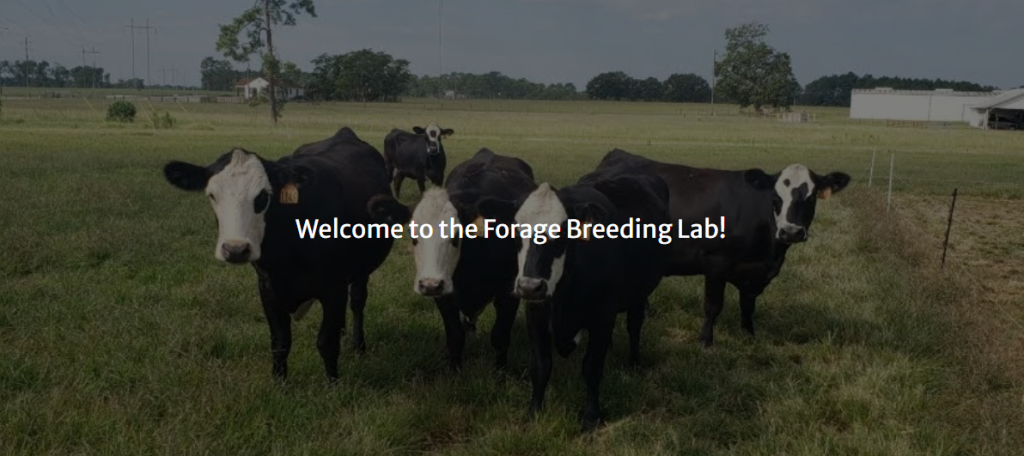
Research Overview
By combining modern genetic technologies with traditional breeding practices, we are working towards the genetic improvement of forage crops via the development of synthetic cultivars.
Breeding better-adapted forage varieties
Traditional forage systems in Georgia have traditionally been based on warm-season grasses, supplemented with cereal crops, annual grasses, and/or hay feeding. One weakness in this system is that productivity is limited in the cooler months. One objective of our breeding program is to create a more balanced forage system in Georgia by extending the grazing season as long as possible into the early winter.
Our research is focused on cultivar development of cool-season perennial grasses and legumes using a combination of conventional breeding and genomics to develop adapted cultivars with improved yield and tolerance to biotic and abiotic stresses.

Forage crops as a source of renewable bioenergy
Switchgrass (Panicum virgatum L.) is a native warm-season grass in the United States. Traditionally used as a hay and forage crop, it is a highly adaptable crop that is able to survive in a variety of conditions. Working in collaboration with several other University of Georgia faculty and the Center for Bioenergy Innovation (CBI) at Oak Ridge National Laboratory, we are combining genomic research, molecular marker applications, and conventional plant breeding to work towards developing a high-yielding variety of switchgrass that can be used as feestock for biofuels.
